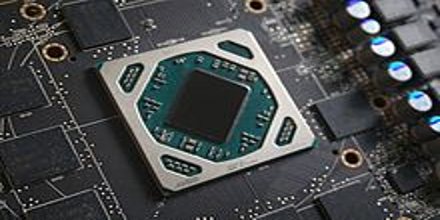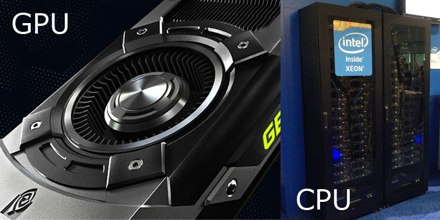GPU – Graphics Processing Unit

GPU is a single-chip processor that creates lighting effects and transforms objects every time a 3D scene is redrawn. These are mathematically-intensive tasks, which otherwise, would put quite a strain on the CPU. Lifting this burden from the CPU frees up cycles that can be used for other jobs.
Modern GPUs are very efficient at manipulating computer graphics and image processing, and their highly parallel structure makes them more efficient than general-purpose CPUs for algorithms where the processing of large blocks of data is done in parallel. In a personal computer, a GPU can be present on a video card, or it can be embedded on the motherboard or—in certain CPUs—on the CPU die.
It was popularized by Nvidia in 1999, who marketed the GeForce 256 as “the world’s first GPU”, or Graphics Processing Unit. It was presented as a “single-chip processor with integrated transform, lighting, triangle setup/clipping, and rendering engines”. Rival ATI Technologies coined the term “visual processing unit” or VPU with the release of the Radeon 9700 in 2002.
A graphics processing unit is able to render images more quickly than a CPU because of its parallel processing architecture, which allows it to perform multiple calculations at the same time. The resulting performance improvements have made GPUs popular chips for other resource-intensive tasks unrelated to graphics.
Computational Functions

Modern GPUs use most of their transistors to do calculations related to 3D computer graphics. They were initially used to accelerate the memory-intensive work of texture mapping and rendering polygons, later adding units to accelerate geometric calculations such as the rotation and translation of vertices into different coordinate systems.
In addition to the 3D hardware, today’s GPUs include basic 2D acceleration and framebuffer capabilities (usually with a VGA compatibility mode). Newer cards like AMD/ATI HD5000-HD7000 even lack 2D acceleration; it has to be emulated by 3D hardware.
GPU-Accelerated Computing
GPU-accelerated computing is the use of a graphics processing unit (GPU) together with a CPU to accelerate deep learning, analytics, and engineering applications. Pioneered in 2007 by NVIDIA, GPU accelerators now power energy-efficient data centers in government labs, universities, enterprises, and small-and-medium businesses around the world. They play a huge role in accelerating applications in platforms ranging from artificial intelligence to cars, drones, and robots.

More recent graphics cards even decode high-definition video on the card, offloading the central processing unit. The most common APIs for GPU accelerated video decoding are DxVA for Microsoft Windows operating system and VDPAU, VAAPI, XvMC, and XvBA for Linux-based and UNIX-like operating systems. All except XvMC are capable of decoding videos encoded with MPEG-1, MPEG-2, MPEG-4 ASP (MPEG-4 Part 2), MPEG-4 AVC (H.264 / DivX 6), VC-1, WMV3/WMV9, Xvid / OpenDivX (DivX 4), and DivX 5 codecs, while XvMC is only capable of decoding MPEG-1 and MPEG-2.
GPU-accelerated computing offloads compute-intensive portions of the application to the GPU, while the remainder of the code still runs on the CPU. From a user’s perspective, applications simply run much faster.
GPU vs CPU Performance

A simple way to understand the difference between a GPU and a CPU is to compare how they process tasks. A CPU consists of a few cores optimized for sequential serial processing while a GPU has a massively parallel architecture consisting of thousands of smaller, more efficient cores designed for handling multiple tasks simultaneously.
Summary about GPU
Architecturally, the CPU is composed of just few cores with lots of cache memory that can handle a few software threads at a time. In contrast, a GPU is composed of hundreds of cores that can handle thousands of threads simultaneously. The ability of a GPU with 100+ cores to process thousands of threads can accelerate some software by 100x over a CPU alone. What’s more, the GPU achieves this acceleration while being more power- and cost-efficient than a CPU.
It is an electronic circuit used to speed up the creation of both 2D and 3D images. GPUs can either be integrated, meaning they are built into the computer’s CPU or motherboard, or they can be dedicated, meaning they are a separate piece of hardware known as a video card. By having a separate processor, the GPU allows the computer’s CPU resources to be used for other important tasks. In the picture is an example of a GPU on a video card without the heat sink.
















